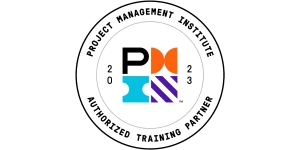The Role of Baseline Sigma in Optimizing Supply Chain Management for Businesses
Supply chain management is critical to your business’s competitive standing. No company can be successful without an effective supply chain ensuring customers get their products at the correct times. The Baseline methodology is one of the best ways to optimize your supply chain for better productivity. This article will explain how baseline data works and helps enhance your supply chain.
What is a Baseline?
A baseline is a statistical measure indicating how well a production process performs. This measure helps you evaluate which processes are okay and which ones need improvement. By analyzing a baseline, you can better understand how to update your production process for better results.
Here are some examples of baseline data:
- We have 10 defects for every 10,000 units produced.
- Customers spend at least 5 minutes on support calls before getting their desired solution.
- It takes us 1 hour on average to process an order.
Baseline data can be used in a Problem or Goal statement.
- Problem: For the past 1 year, we’ve had 10 defects for every 10,000 units produced, and it takes an average of 1 hour to process an order.
- Goal: We need to reduce the time spent processing orders from 1 hour to 30 minutes by the end of 2024.
The baseline is simply a concrete description of a process, either negatively or positively. It’s a clear definition that helps you decide whether the process needs improvement.
What’s an effective baseline measure?
Knowing what to evaluate is essential for your business. Otherwise, you might evaluate the wrong processes and optimize unnecessary baselines that don’t add much value.
The two most common baseline measurements are time and defects. Processes that take too much time need improvement, as do products that come out wrong (defects).
Baseline evaluation is a vital part of Lean Six Sigma, a team-focused managerial approach that empowers you to eliminate waste and improve your production process.
How to apply baseline data in your supply chain management
Follow these steps to implement baseline data in your supply chain management:
- Identify the key performance indicators (KPIs) that greatly affect your supply chain. For instance, if you run a professional consulting firm, your KPIs include revenue per employee, revenue per billable resource, project margin, churn rate, etc.
- Gather and analyze baseline data to measure your current standing against these KPIs. For example, “My company’s current annual revenue per employee is $50,000.”
- Identify areas that need improvement for each KPI, e.g., “I need to boost my annual revenue per employee from $50,000 to $100,000.
- Develop concrete plans to improve the areas you’ve identified.
- Implement the plans and monitor the results. Don’t hesitate to change things if needed.
- Continuously monitor your plans to ensure they align with business goals. Improvement is a never-ending process for your business.
Bolstering your supply chain management with baseline data
Baseline data is crucial to enhancing your business’s supply chain to deliver better results. It helps you accurately evaluate business processes and decide what needs improvement.
Implementing baseline data means establishing a culture of setting clear KPIs and continuously measuring your performance against these KPIs. This culture keeps your business competitive and constantly tweaking strategies to find out what delivers the best productivity.
The baseline measure is part of the valuable knowledge people gain through Lean Six Sigma training. We offer formal Lean Six Sigma courses to imbibe your employees with adequate knowledge of identifying and improving baseline data. Contact us now to see what we can provide you with.
SixSigma.us offers both Live Virtual classes as well as Online Self-Paced training. Most option includes access to the same great Master Black Belt instructors that teach our World Class in-person sessions. Sign-up today!
Virtual Classroom Training Programs Self-Paced Online Training Programs







